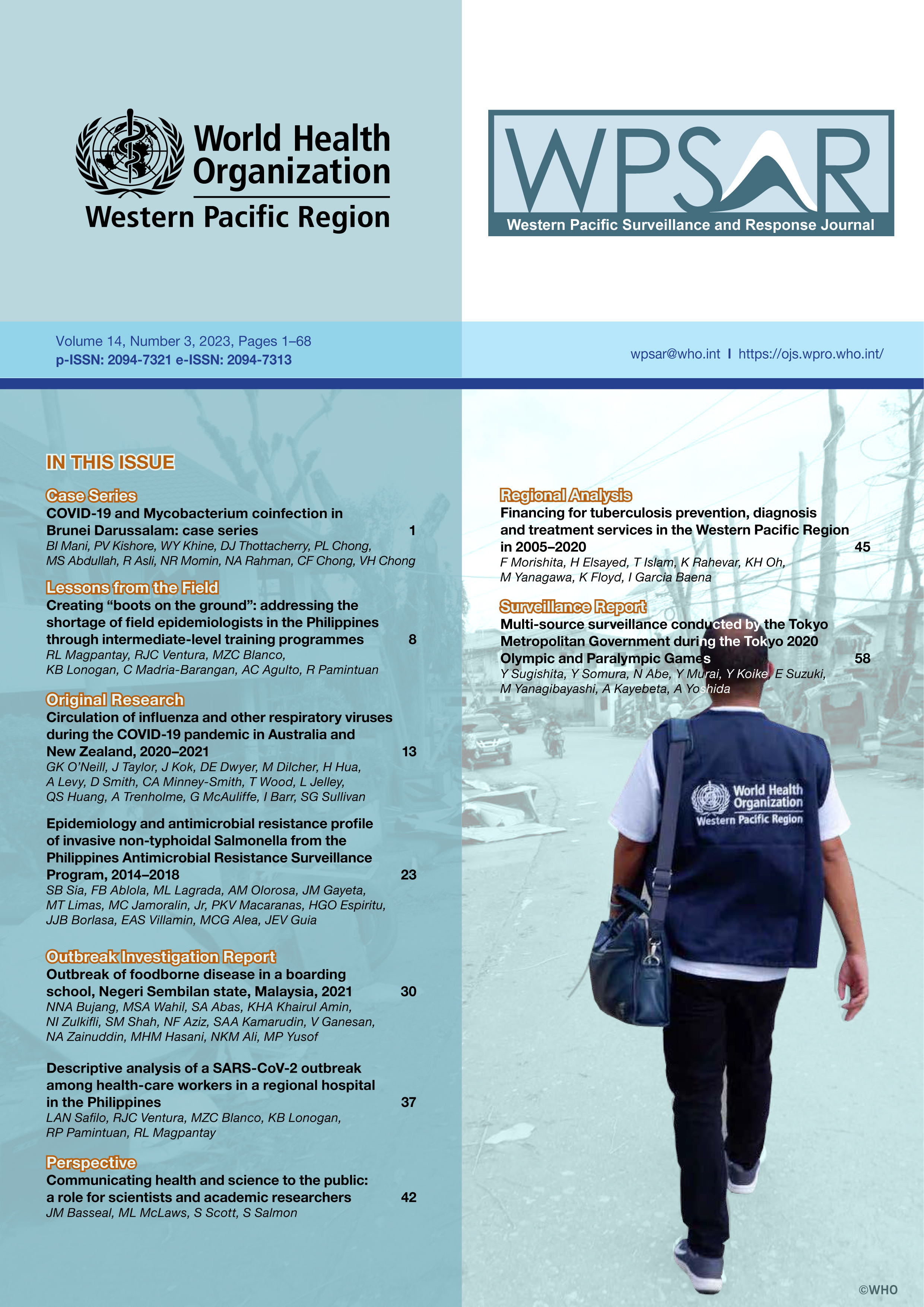Epidemiology and antimicrobial resistance profile of invasive non-typhoidal Salmonella from the Philippines Antimicrobial Resistance Surveillance Program, 2014–2018
DOI:
https://doi.org/10.5365/wpsar.2023.14.3.1030Keywords:
Non-typhoidal Salmonella, iNTS, Philippines, antimicrobial drug resistanceAbstract
Objective: The epidemiology of invasive non-typhoidal Salmonella (iNTS) in the Philippines is not well elaborated. The present study describes the serotype distribution and antimicrobial susceptibility patterns of iNTS in the Philippines from 2014 to 2018.
Methods: Invasive NTS isolates were collected through the Department of Health’s Antimicrobial Resistance Surveillance Program (ARSP). The identification of the isolates was confirmed using automated (Vitek®, bioMérieux, Marcy l’Étoile, France) and conventional methods. The isolates were serotyped using the slide agglutination method, and susceptibility testing was performed using Clinical and Laboratory Standards Institute guidelines. Demographic data were collected from the ARSP database.
Results: There were 138 isolates collected from human invasive specimens with 97.8% from blood samples. The most common serotypes were Salmonella Enteritidis (n = 84, 60.9%) and Salmonella Typhimurium (n = 18, 13.0%). Most of the isolates were from males (n = 88, 63.8%) and from the 0–5-year age group (n = 61, 44.2%). The proportions of iNTS isolates resistant to first-line antibiotics were as follows: ampicillin (23.2%), chloramphenicol (9.6%), ciprofloxacin (8.7%), ceftriaxone (2.2%) and trimethoprim-sulfamethoxazole (8.8%). The proportion of isolates with multi-drug resistance was 13.0% (18/138) with the most common resistance profile being resistance to ampicillin-chloramphenicol-ciprofloxacin from Salmonella Enteritidis isolates (n = 5).
Discussion: Resistance to first-line antibiotics limits the therapeutic choices for Salmonella infection. Relevant local antimicrobial resistance data on iNTS may support appropriate empiric therapy among vulnerable populations.

